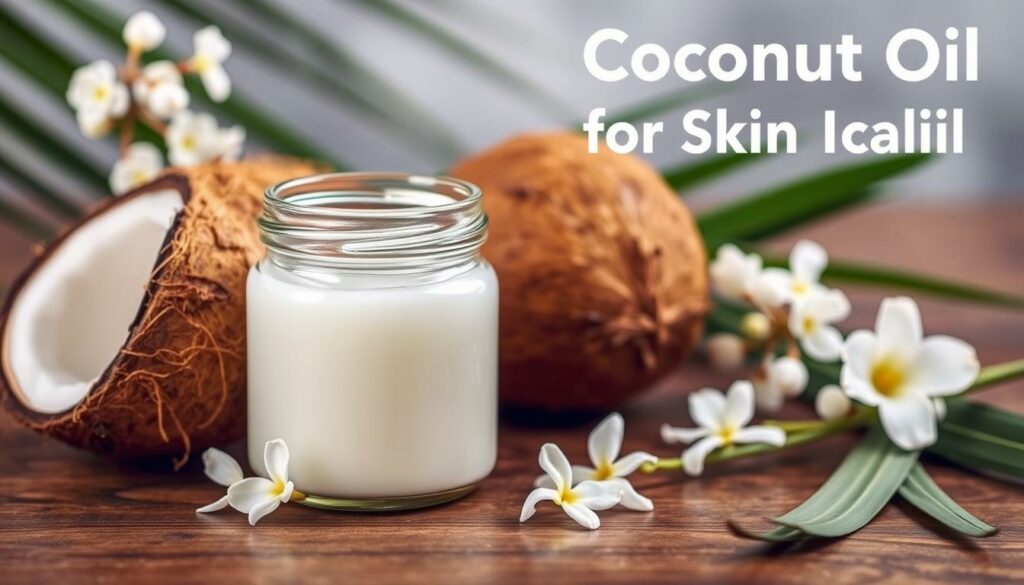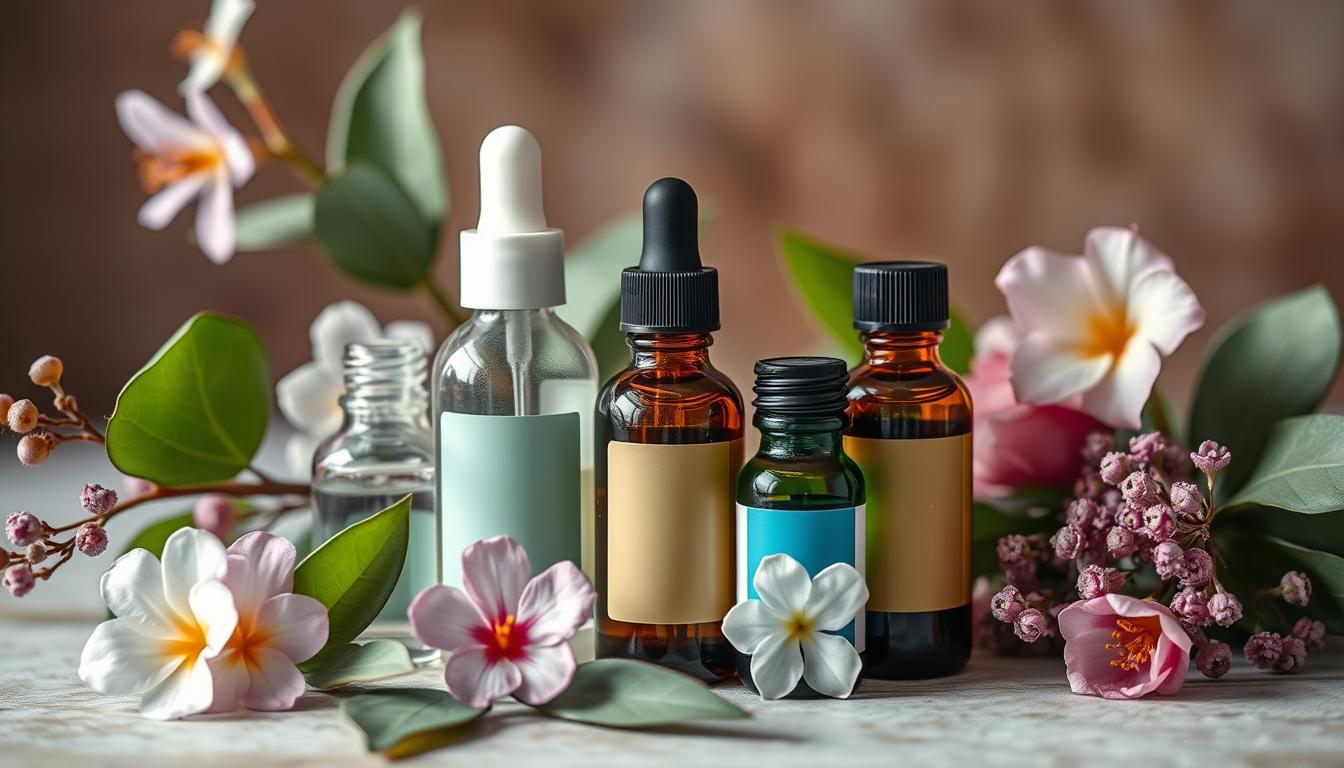Are you tired of dealing with rosacea’s uncomfortable symptoms? You’re not alone. Millions worldwide struggle with this chronic skin issue. It can make your skin look red, show blood vessels, and cause bumps and pimples. But, there’s hope. Natural solutions can help manage your symptoms and improve your skin’s look.
So, what’s the best oil for rosacea? We’ll look at natural oils that soothe and calm your skin. They also give it the nourishment and hydration it needs. You’ll learn about top options like rosehip seed oil, marula oil, and more. These can help you manage rosacea and get healthier, glowing skin.
Key Takeaways
- Rosacea is a chronic skin condition that causes reddened, flushed skin, typically on the face.
- Natural treatments, including certain oils, can help manage the symptoms of rosacea.
- Top oils for treating rosacea include rosehip seed oil, marula oil, and sea buckthorn oil.
- Other effective natural oils for rosacea include evening primrose oil and borage oil.
- Gentle plant-based oils, such as neem oil and hemp seed oil, can also be beneficial.
What is Rosacea?
Rosacea is a chronic skin condition that mainly affects the face. It causes redness, flushing, and pimples. The exact cause is still unknown but is thought to be linked to genetics and the environment.
Causes and Symptoms
Rosacea’s main symptoms include constant redness, visible blood vessels, bumps, and sensitive skin. These can be triggered by things like the sun, stress, spicy foods, and extreme temperatures.
Types of Rosacea
There are several types of rosacea, each with its own set of symptoms:
- Erythematotelangiectatic rosacea – Characterized by persistent redness and visible blood vessels.
- Papulopustular rosacea – Characterized by pimples and bumps, in addition to redness.
- Phymatous rosacea – Characterized by thickening of the skin, often on the nose.
- Ocular rosacea – Characterized by irritation and inflammation of the eyes and eyelids.
Knowing the type of rosacea helps both individuals and doctors create a good treatment plan.
Natural Treatments for Rosacea
Rosacea is a skin condition that causes redness, flushing, and visible blood vessels. While there’s no cure, natural treatments can help manage symptoms. These solutions use nature to soothe and nourish the skin, offering a gentle way to deal with this condition.
Aloe vera is a great natural remedy for rosacea. It’s known for its soothing and anti-inflammatory effects. This makes it perfect for reducing redness and irritation. Green tea is also beneficial, thanks to its antioxidants. These help reduce inflammation and protect the skin from harm.
Oatmeal is another effective treatment for rosacea. Applied to the skin, it calms irritation and relieves symptoms. Chamomile is also calming and anti-inflammatory, offering natural relief for rosacea.
Essential oils like lavender and tea tree oil can help too. They have anti-inflammatory and antimicrobial properties. These can address rosacea’s underlying causes and offer a holistic treatment approach.
By adding these natural treatments to their skincare routine, people with rosacea can find relief. It’s crucial to talk to a healthcare professional before starting any new treatments, especially if you have rosacea.
| Natural Treatment | Key Benefits |
|---|---|
| Aloe Vera | Soothing, anti-inflammatory |
| Green Tea | Antioxidant-rich, reduces inflammation |
| Oatmeal | Calms skin, reduces irritation |
| Chamomile | Calming, anti-inflammatory |
| Essential Oils | Anti-inflammatory, antimicrobial |
Best Oil to Treat Rosacea
Managing rosacea can be tough, but some natural oils are great for it. Rosehip seed oil, marula oil, and sea buckthorn oil are top picks. Each one has special benefits for soothing and improving rosacea.
Rosehip Seed Oil
Rosehip seed oil is packed with vitamins C and E, plus essential fatty acids. These help lessen rosacea’s redness and swelling. Its antioxidants also shield the skin from harm, making rosacea worse.
Marula Oil
Marula oil is another great choice for rosacea. It’s light, doesn’t feel greasy, and is full of antioxidants. Its fatty acids make the skin stronger, helping with rosacea’s sensitivity and irritation.
Sea Buckthorn Oil
Sea buckthorn oil is special for rosacea. It has fatty acids, carotenoids, and vitamins. Omega-7 fatty acids calm inflammation, and antioxidants nourish the skin. This oil reduces redness and enhances skin look.
Start with a little of these oils on your skin and watch how it feels. Gradually add more as needed. Always test a small area first. With the right oils, rosacea can be easier to manage.
Other Effective Natural Oils
There are more natural oils that can help with rosacea, besides rosehip seed oil, marula oil, and sea buckthorn oil. Evening primrose oil and borage oil are two examples that have shown promise.
Evening Primrose Oil for Rosacea
Evening primrose oil is packed with gamma-linolenic acid, an omega-6 fatty acid that fights inflammation. This oil can lessen rosacea symptoms like redness and irritation. It may also improve the skin’s look and feel.
Borage Oil for Rosacea
Borage oil is another option for rosacea. It’s also rich in gamma-linolenic acid, which helps the skin’s barrier and reduces inflammation. This oil can also make the skin hydrated and healthier, which is great for rosacea-prone skin.
Evening primrose oil and borage oil are natural and plant-based. They might be good additions to your rosacea care routine. Always test them on a small area first to check for any bad reactions before using them regularly.
“Evening primrose oil and borage oil have shown promise in helping to manage the symptoms of rosacea, thanks to their anti-inflammatory properties and ability to support the skin’s barrier function.”
Gentle Plant-Based Oils
There are many oils that can help with rosacea, but some gentle, plant-based options are great too. Neem oil and hemp seed oil are two such oils that can soothe irritated skin.
Neem Oil
Neem oil comes from the neem tree’s leaves and seeds. It’s full of natural medicine. This oil fights bacteria and reduces swelling that rosacea causes. Its ingredients like azadirachtin and nimbidin help heal the skin.
Hemp Seed Oil
Hemp seed oil is a gentle choice for rosacea. It’s packed with healthy fats like linoleic acid and gamma-linolenic acid. These fats moisturize the skin without making it worse. Its anti-inflammatory effects also help with rosacea symptoms.
Using neem oil and hemp seed oil can naturally soothe rosacea. Adding these oils to your skincare can help fix rosacea from the inside out. They provide relief and care for your sensitive skin.
Coconut Oil: A Versatile Option
Are you looking for natural ways to handle rosacea? Coconut oil could be a good choice. It doesn’t have specific studies for rosacea, but it’s full of anti-inflammatory, antioxidant, and moisturizing stuff. These can help people with this skin issue.
You can put coconut oil right on your skin to soothe and feed it. Its special fats might reduce inflammation and shield sensitive rosacea skin. Plus, its antioxidants fight off the damage that can make rosacea worse.
Coconut oil isn’t just for direct skin use. It can also carry essential oils that help with rosacea. Mixing coconut oil with certain essential oils lets you make a skincare plan just for you.
| Potential Benefits of Coconut Oil for Rosacea | Considerations |
|---|---|
|
|
Coconut oil could be a natural way to manage rosacea, but listen to your skin first. Always do a patch test before using it in your skincare. And, talking to a dermatologist is a smart move to find the best way for your rosacea.

Using Oils for Rosacea
Using oils for rosacea requires the right application method. Begin by washing your skin. Then, put the oil on when your skin is damp. This boosts the oil’s absorption.
Massage the oil into your skin with circular motions. Be gentle to avoid irritating sensitive areas.
Application Tips
Here are some tips to make the most of your rosacea oils:
- Cleanse your skin first to remove dirt or residue that could affect the oil’s performance.
- Put the oil on when your skin is damp for better absorption.
- Massage the oil in with circular motions, avoiding harsh rubbing.
- Start with a little oil and add more as needed to avoid overloading your skin.
- Be patient and consistent with your application, as results may take time.
Patch Testing
Always do a patch test before using a new oil on your face. Apply a small amount to a discreet skin area like the inside of your wrist or behind your ear. Watch for redness, itching, or irritation.
If you notice any negative reactions, stop using the oil. Choose another one. Patch testing helps you find oils that suit your skin without causing problems.
By following these tips and testing oils first, you can make sure your rosacea treatment is safe and effective. With the right approach, natural oils can soothe and nourish your skin.
Lifestyle Changes for Rosacea
Managing rosacea is more than just about skincare products. Making lifestyle changes is key to reducing symptoms and preventing flare-ups. By changing your daily routine, you can fight rosacea triggers and get smoother skin.
Stress is a big trigger for rosacea. To fight this, try relaxation methods like meditation, deep breathing, or yoga. These can calm your mind and body.
It’s also vital to protect your skin from the sun. UV radiation can make rosacea worse, so use a broad-spectrum sunscreen and stay in the shade when you can. Try to avoid extreme temperatures to prevent flare-ups.
Watch what you eat too. Some foods like spicy dishes, alcohol, or certain drinks can trigger rosacea. Cutting down on these can help control your symptoms.
These lifestyle changes for rosacea can help your skincare routine. Remember, everyone’s rosacea is different. You might need to try a few things to find what works best for you.

When to Seek Professional Help
Rosacea can really affect your life, but you can manage it well. While trying natural treatments and changing your lifestyle can help, sometimes you need a dermatologist’s help.
If your rosacea is bad, doesn’t go away, or home remedies don’t work, see a dermatologist. They can give you rosacea treatments and rosacea medications to help you.
A dermatologist might give you creams or antibiotics to lessen inflammation and redness. For worse cases, they might suggest laser therapy or microneedling. These can make blood vessels less visible and lessen rosacea’s severity.
Knowing when to see a dermatologist for rosacea is key. Don’t wait if your rosacea isn’t getting better with what you’re doing. The right treatment can lead to better skin health and improve your life.
| Rosacea Symptoms | Severity Level | Recommended Action |
|---|---|---|
| Mild, occasional flushing and redness | Mild | Try natural treatments and lifestyle changes |
| Persistent redness, visible blood vessels, and occasional bumps | Moderate | Consult a dermatologist for prescription rosacea treatments |
| Severe, constant redness, swelling, and frequent breakouts | Severe | Seek immediate medical attention from a dermatologist |
Conclusion
Managing rosacea can be tough, but using the right natural solutions can help. You can find relief with oils like rosehip seed oil, marula oil, and sea buckthorn oil. These oils are great for soothing your skin and easing symptoms.
Using these oils regularly, along with lifestyle changes, is key. If needed, getting professional advice is also important. This approach can help you manage rosacea and improve your skin’s health and look.
By taking a holistic approach, you can take charge of your skin. This means using oils and making lifestyle changes. Keep trying different things and trust that you’ll find the right solutions. With patience and the right approach, you can feel better and more confident.
Embrace a holistic way to manage rosacea, from oils to lifestyle changes. This can help you control your skin’s health and get the glowing, comfortable skin you want. Keep exploring, stay dedicated, and enjoy your path to better, happier skin.

